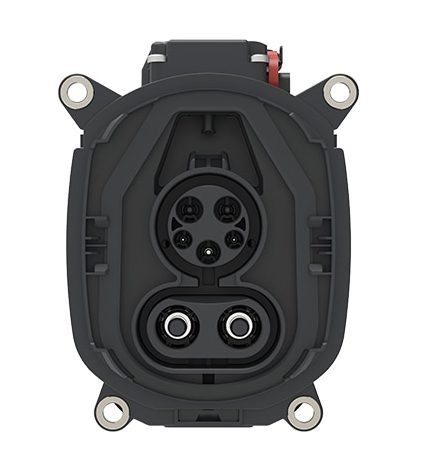How e-Mobility Is Impacting Energy Demand
A burgeoning global population requires more energy than ever for transportation, industry, and infrastructure. New technologies will help meet this demand while also reducing the climate impact of our activities.

Global energy demand and supply is changing significantly. In transportation, electric vehicle (EV) innovation has grown quickly, particularly in Europe and Asia, due in large part to favorable regulations, significant investment, and sustainability pressures. EVs are projected to represent almost two-thirds of global car sales by 2030. In the Americas, however, EV adoption has been suppressed by range anxiety and charging availability. So, what’s the key to unlocking mass adoption of EVs? Making charging as fast and easy as visiting a gas station.
The rise of megacities will have an impact on energy use as well. There are currently 45 megacities globally, and the number is rising. These dense environments can’t support private cars for all of their 10 million-plus residents, driving demand for new solutions such as Mobility as a Service (MaaS) models, including what is projected to include large numbers of electric robo-taxis, shuttles, and mobility pods.

Smart city connectivity depends on a network of antennas. TE Connectivity’s Flexible PCB (FPC) Antenna accommodates triple band connectivity with Wi-Fi and MHF / MHF1 / U.FL.
Those cities are not only becoming larger, they are also becoming smarter. Smart cities automate infrastructure systems, from energy to public transportation to traffic stoplights, and will represent a $5.2 trillion market by 2030. Advances in sensors, 5G connectivity, IoT, big-data platforms, analytics, smart grids, and integrated monitoring capabilities are some of the technologies driving smart city development. Those advances will help to reduce congestion, but they will also further drain a city’s already taxed power grid.
Autonomous transportation will also have an impact. Autonomous features aren’t limited to EVs; these functions can be added to all new vehicles, or even be activated at a later date as part of a subscription. “As the industry continues to evolve, consumers will benefit from a steady increase in Level 2+ automation advances,” said Ralf Klaedtke, CTO, VP, Transportation Solutions, TE Connectivity.
Lastly, as environmental concerns grow, governments, businesses, and consumers are seeking more sustainable transportation options to reduce emissions and pollution, which further encourages the adoption of electric vehicles over those powered by internal combustion engines (ICEs).
Altogether, these trends are converging to create a major shift in energy consumption. The International Energy Agency’s (IEA) Net Zero Emissions by 2050 Scenario projects that electricity’s share in total final energy consumption will rise from 20% in 2022 to more than 27% in 2030.

TE Connectivity’s new plug and play solar insulation piercing connector assemblies help accelerate solar farm implementation.
Today, 82% of the world’s energy is supplied by oil, coal, or gas, creating immense demand for fossil fuel exploration, production, storage, and distribution. Wind and solar generation has risen to 12%. However, the world needs to triple renewable energy capacity by 2030 to achieve the IEA’s Net Zero Roadmap goals for eliminating all emissions from the energy sector by 2050.
Barriers that have held renewable energy development and consumption back are being toppled. In 2021, the cost of electricity from onshore wind fell by 15%, offshore wind by 13%, and solar by 13% compared to 2020. Battery energy storage systems and energy management systems enable businesses to capture renewable energy, store it, and flexibly deploy it to meet sustainability, cost, and other objectives, overcoming green energy’s reliability issues. As a result, renewable energy could contribute up to 65% of the world’s total electricity supply by 2030.
“To keep pace with this demand, utilities must replace aging infrastructures with smart grids that can handle higher loads and intelligently manage demand. In many parts of the world, grid technology is over 100 years old,” said Davy Brown, CTO, VP, Industrial Solutions, TE Connectivity. “Smart grids will support new applications, such as business prosumers, who produce and monetize energy; EV return of energy to the grid; and the export of renewable-generated electricity to other countries.”
“In China and Europe, which have denser multi-family housing, several families need to charge their EVs at the same time from the same location,” adds Brown. “New power grids can support these applications.”
The automotive and energy industries are responding to increased energy demand
Automotive original equipment manufacturers (OEMs) are doing their part to respond to the shift in energy demand by evolving how much their vehicles weigh and how they manage and consume energy.
“EVs are increasingly using zonal architectures that logically and physically group systems into zones, which are managed by the same processor, have their own power distribution unit, and are connected to the Ethernet via a gateway,” said Klaedtke.
Centralized application server-based architectures control the entire car and enable advanced functionality. These high-performance electrical architectures, which include high-speed Ethernet connectivity, are the basis for software defined vehicles (SDVs). SDVs not only reduce harness weight by more than 30%, but they also allow for sophisticated battery management functionality that can be upgraded via the internet throughout the life of the vehicle as new innovations become available that can further reduce charging time and extend range and battery performance.
 Charging stations are evolving as well. Today, most DC charging stations provide around 150 KW charging power. However, that will increase to 750+ KW by 2030. This will allow an EV with an 80 KW battery to fully charge in as little as six minutes, making charging an EV as fast and as easy as refueling an ICE vehicle at a gas station. This is being enabled by innovation from component manufacturers. “By 2030, component manufacturers will provide smart contactors, next-generation battery interconnection systems, and thermally managed busbars that support higher-voltage requirements and can be automated easily,” said Brown.
Charging stations are evolving as well. Today, most DC charging stations provide around 150 KW charging power. However, that will increase to 750+ KW by 2030. This will allow an EV with an 80 KW battery to fully charge in as little as six minutes, making charging an EV as fast and as easy as refueling an ICE vehicle at a gas station. This is being enabled by innovation from component manufacturers. “By 2030, component manufacturers will provide smart contactors, next-generation battery interconnection systems, and thermally managed busbars that support higher-voltage requirements and can be automated easily,” said Brown.
Component manufacturers are also choosing aluminum over copper, gaining cost savings by using lighter-weight materials that improve performance by making the vehicle lighter. This has the added benefit of contributing to sustainability since aluminum is easier to recover.
How OEMs and component manufacturers can support the shift to e-mobility
OEMs and component manufacturers can support customers making the transition to e-Mobility in multiple ways:
- Understanding trends: Megatrends are driving industry developments and OEMs will want to utilize them to place their bets strategically.
- Considering sustainability in design: Most (80%) of product lifetime emissions are determined by design choices. OEMs and component manufacturers should consider sustainability from Day 1, designing for circularity by choosing new sustainable materials, lightweighting products, and enabling component recovery and reuse. OEMs and component manufacturers can use generative AI to optimize sustainability and weight, design in new reduced emission materials that meet automotive manufacturers’ sustainability requirements, such as eco-friendly resins.
- Innovating charging solutions: The world will be pivoting to ultra-fast DC charging, and auto manufacturers and partners need help building this infrastructure. OEMs and component manufacturers can provide innovative solutions that support bi-directional charging.

TE has developed a charging inlet platform that meets all charging standards around the world: NACS, CCS1, CCS2, GB, and CHAdeMO. It can support up to 1,000 volts of direct current and provides proximity detection, temperature sensing, and an optional heating element.
Get Ready for a Future of e-Mobility
The future of transportation has been one of constant innovation. That will only accelerate. Automotive OEMs and component manufacturers are working together to enable new e-Mobility solutions and MaaS models that empower consumers, reduce traffic congestion and pollution, and decrease carbon emissions. The shift of the energy demand from e-Mobility not only benefits us by helping to create a safer and cleaner environment, but also it unlocks potential new business models and new revenue streams for automotive OEMs and suppliers.
Learn more about energy and e-mobility solutions at TE Connectivity.
Like this article? Check out our other Alternative Energy and Smart Cities articles, our Industrial Market Page, and our 2023 and Article Archives.
Subscribe to our weekly e-newsletters, follow us on LinkedIn, Twitter, and Facebook, and check out our eBook archives for more applicable, expert-informed connectivity content.
- How e-Mobility Is Impacting Energy Demand - January 9, 2024





